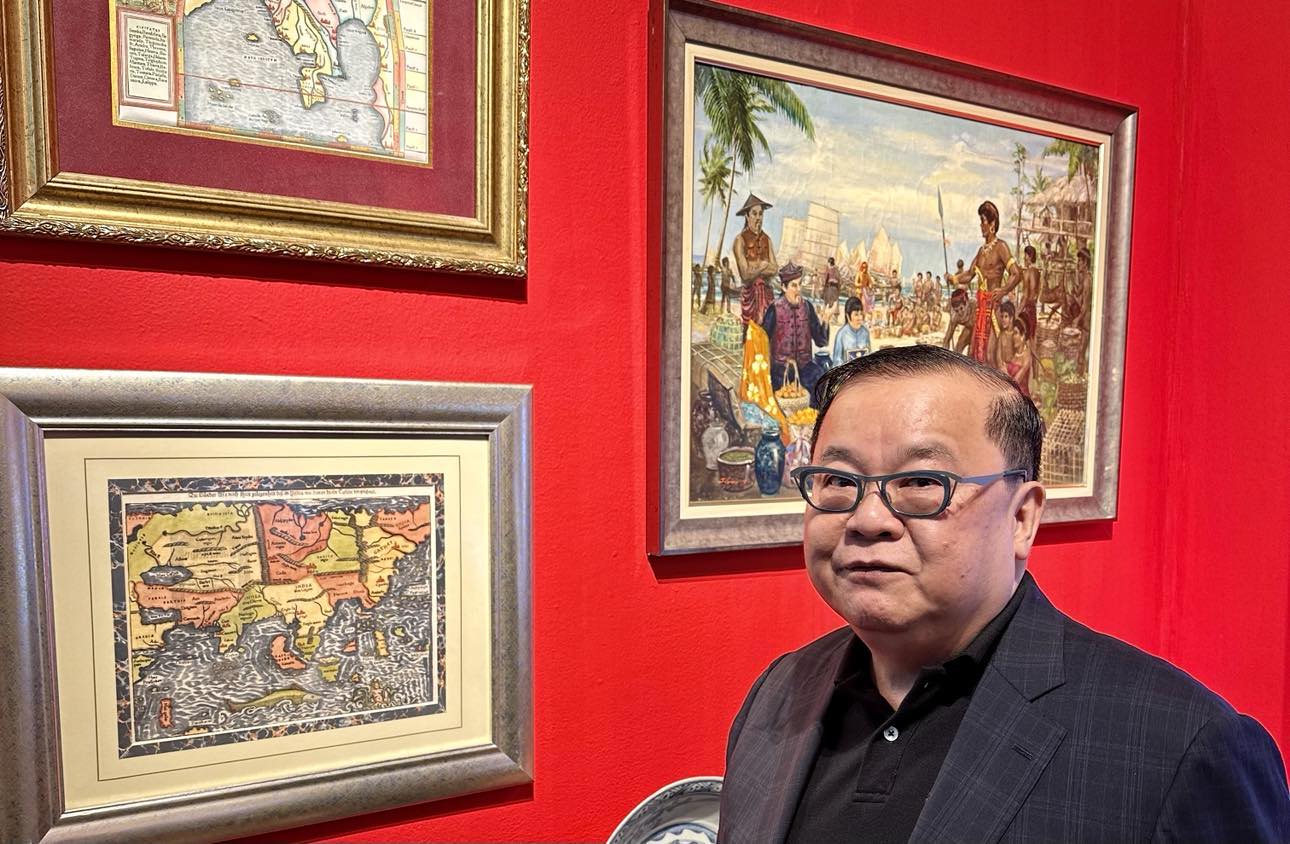To mark the debut of the auction house’s Private Art, Public Lives series, the president and CEO of UnionBank and his educator-wife showcase their collection of rare objects from pre-colonial and Spanish colonial Philippines in a three-day exhibit. That they’re priceless is a given. What motivates them primarily to collect and, in Aileen’s words, “become custodians” of these cultural gems is a need to preserve and share the richness and diversity of our ancestors’ culture, history and way of life with today’s Filipinos.
By Alex Y. Vergara
With the recent media preview of Private Art, Public Lives, Salcedo Auctions has given art afficionados another option to view up close and personal exceptional and priceless Philippine antiques and works of art, including pre-colonial and Spanish colonial-era gold jewelry pieces and framed maps. And, unlike in the case of the leading auction house’s bi-annual The Well-Appointed Life, guests don’t have to make bids because not a single item is for sale.
The show, which will have invitational viewings tomorrow and Friday (Aug. 31 and Sept. 1), and a public viewing on Saturday (Sept. 2) at Salcedo Auctions in Makati, features the private collection of one of the region’s top bankers, UnionBank’s Edwin Bautista, and his wife Aileen.
The debut, according to Salcedo Auctions chairman and chief specialist Richie Lerma, marks the start of the series wherein private individuals like the Bautista couple reveal facets of themselves through their respective private art and antique collections. Since not everything from their growing collection could be displayed, Edwin and Aileen sought the help of writer, stage director and cultural arbiter Floy Quintos to sift through the pieces and provide them with a semblance of order.
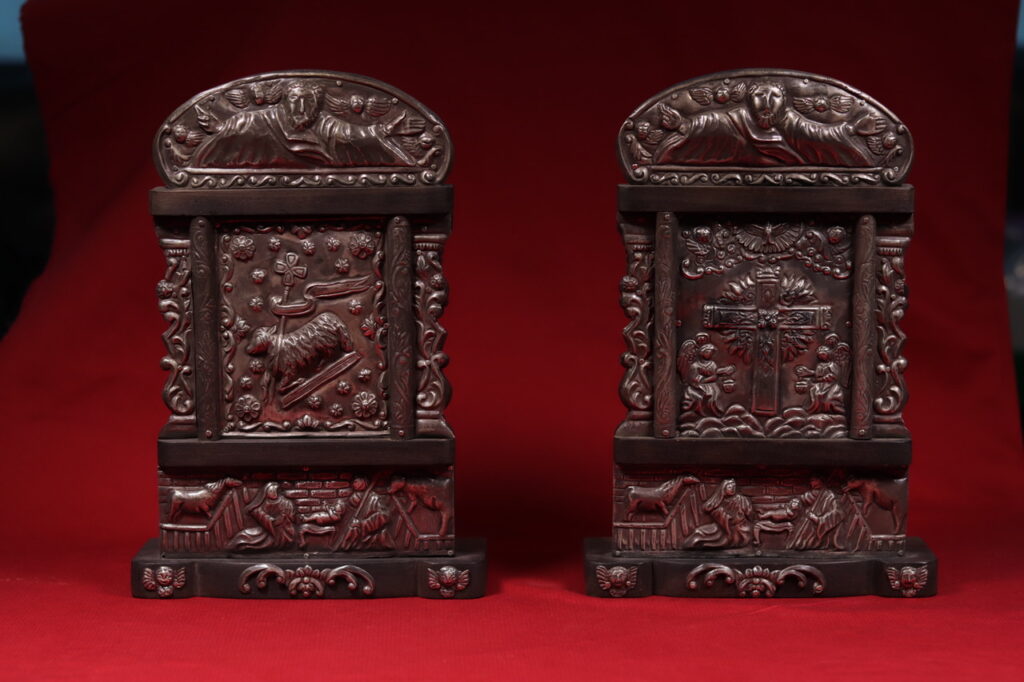
A pair of rare early 19th century silver porta paz from a church in Panay, depicting the Lamb of God and the Crucifixion
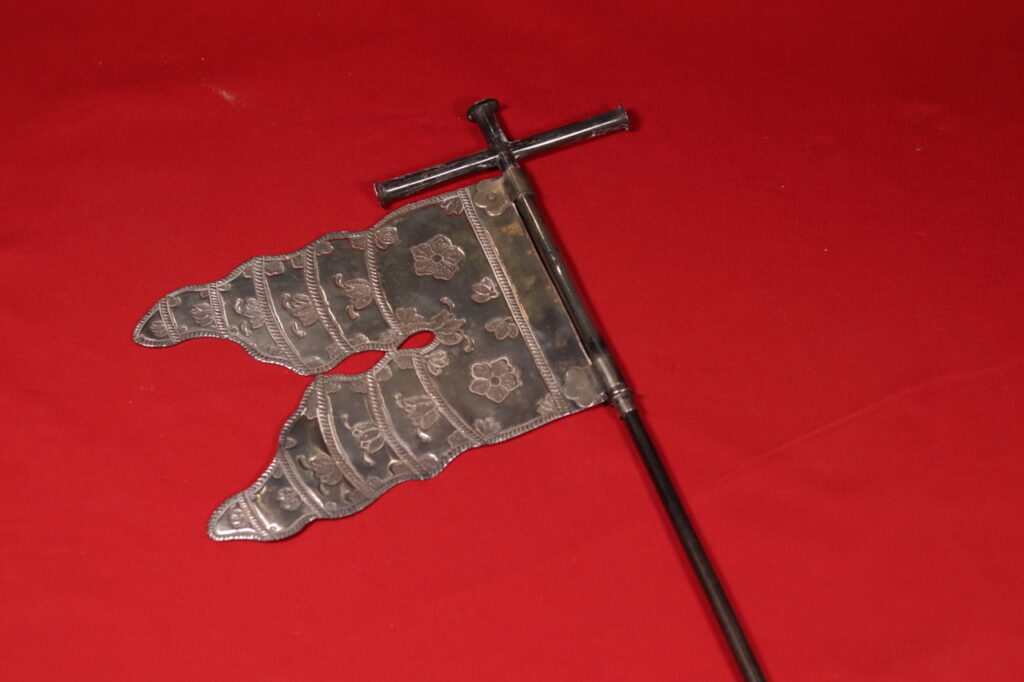
Early 19th century silver guidon or processional flag
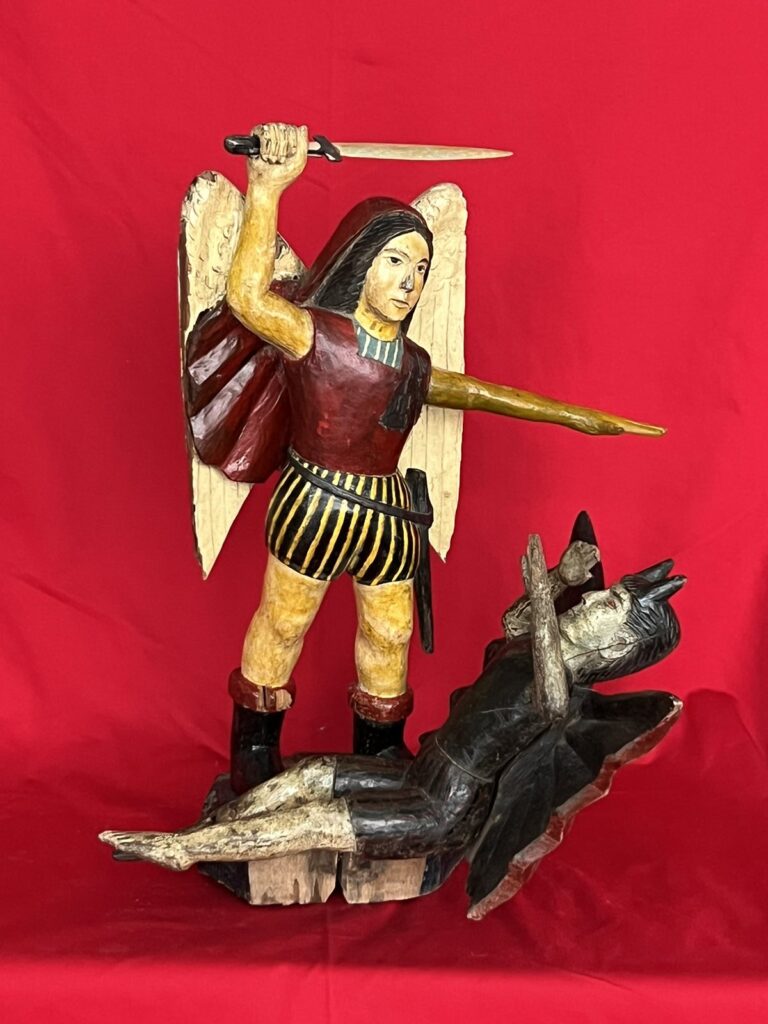
A devotional sculpture of San Miguel defeating the devil. The story behind it is that the Siquijor-based maker was supposedly guided by the Holy Spirit in its creation.
Quintos aptly titled the exhibition, which also features antique bladed weapons with handcrafted and decorative hilts, A Passion for Connections and Their Narratives. According to an in-house press material, Quintos went on to section the objects according to theme:
Islands, Partners and Colonizers “examines trade partnerships with various Southeast Asian polities, as well as the gradual identification of our island kingdoms as one colony of Spain,” Quintos states in the exhibition notes. Visualizing the Faith includes santos in wood, ivory and silver, with a sub-section titled A Faith Proclaimed Through Splendor to showcase colonial jewelry and adornment from Aileen Bautista’s own collection. A Secret Spirituality is devoted to “anting-antings (amulets) as a language of resistance.” Its sub-section, Re-Imagining the Divine features mamarrachos, or folk santos (Christian images) — unique in their unorthodox portrayals of holy personages — carved by local artisans.

A medallion used as an anting-anting or simply as an adornment by the Rizalistas of Quezon province.
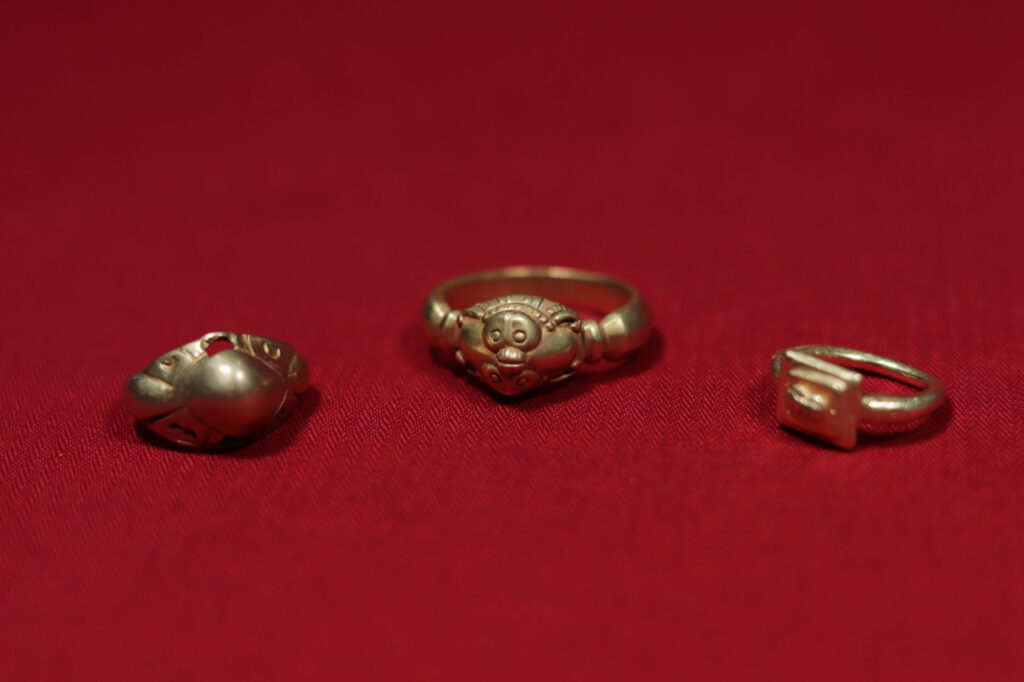
10th to 14th century gold rings with Garuda, Buddhist and Hindu symbols
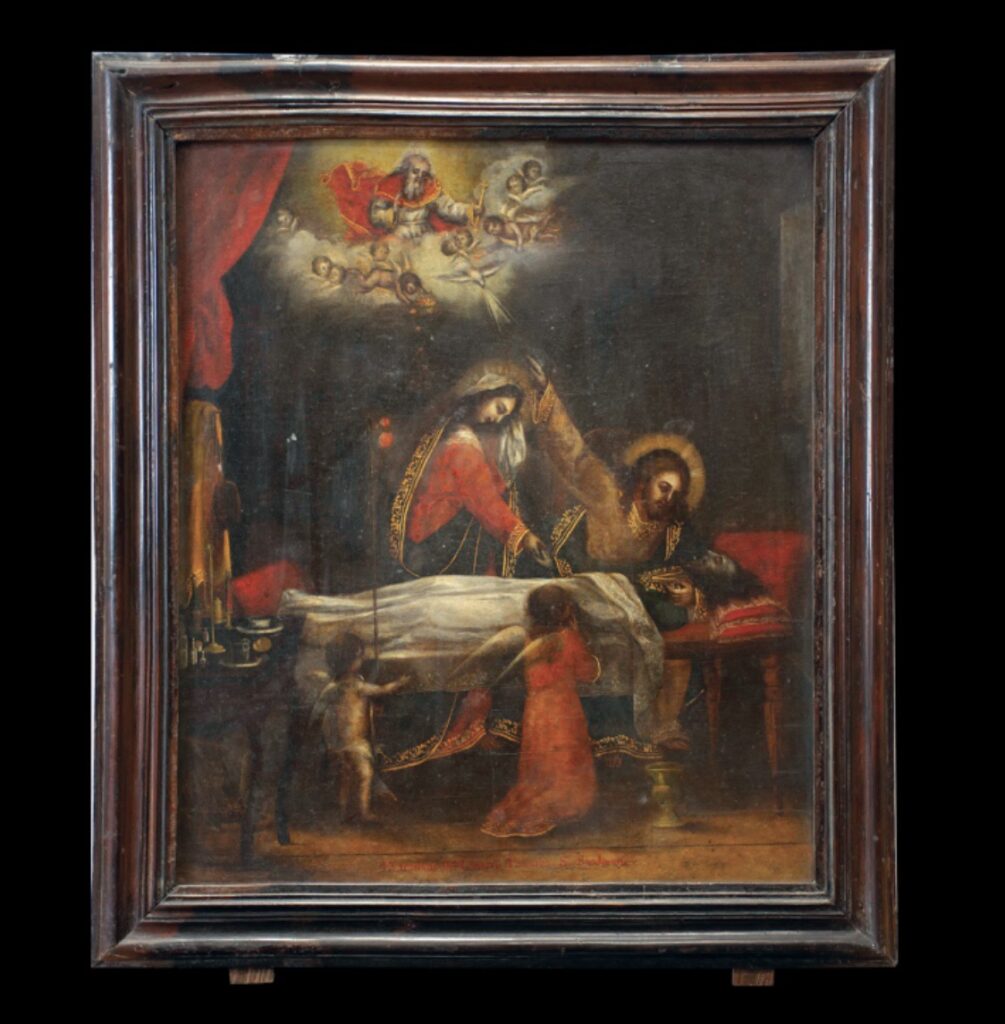
Painting depicting the death of St. Joseph (there was no mention of his passing in the bible), which shows him being welcomed to heaven.
The last section, the press statement added, “is a poignant visioning of our journey to nationhood, narrated through battle-captured Philippine flags as well as indigenous and Katipunan-related armaments.”
“Edwin and I believe that by collecting Philippine antiques, we can help preserve our cultural heritage and ensure that future generations would be able to appreciate and learn from our country’s rich history,” said Aileen, an educator by profession. “But preservation goes beyond conservation, it also encompasses appreciation and celebration. That’s why we have this mini exhibit. We have decided to unveil and share some of them with the public to allow their stories to resonate. Through exhibitions, we can give new light into these relics, infusing them with relevance and meaning for the present and future generations.”
“People have seen our public lives, so today, we are unveiling our private art,” Edwin said. “By sharing our private art, we are also sharing part of our private lives. I’m fascinated by these things because they tell a story. It talks about connections and lots of insights, and I could go on and on about the interesting things that these have taught me.”
The seasoned banker, after relating his interest with the past with his profession that tends to look towards the future, added: “To end, I’m pretty sure that after I talked about how it relates to my work, you will be tempted to ask, ‘is there a special anting-anting (amulet) that helps bring Unionbank to where it is today?’ That, ladies and gentlemen, will continue to be a secret.”
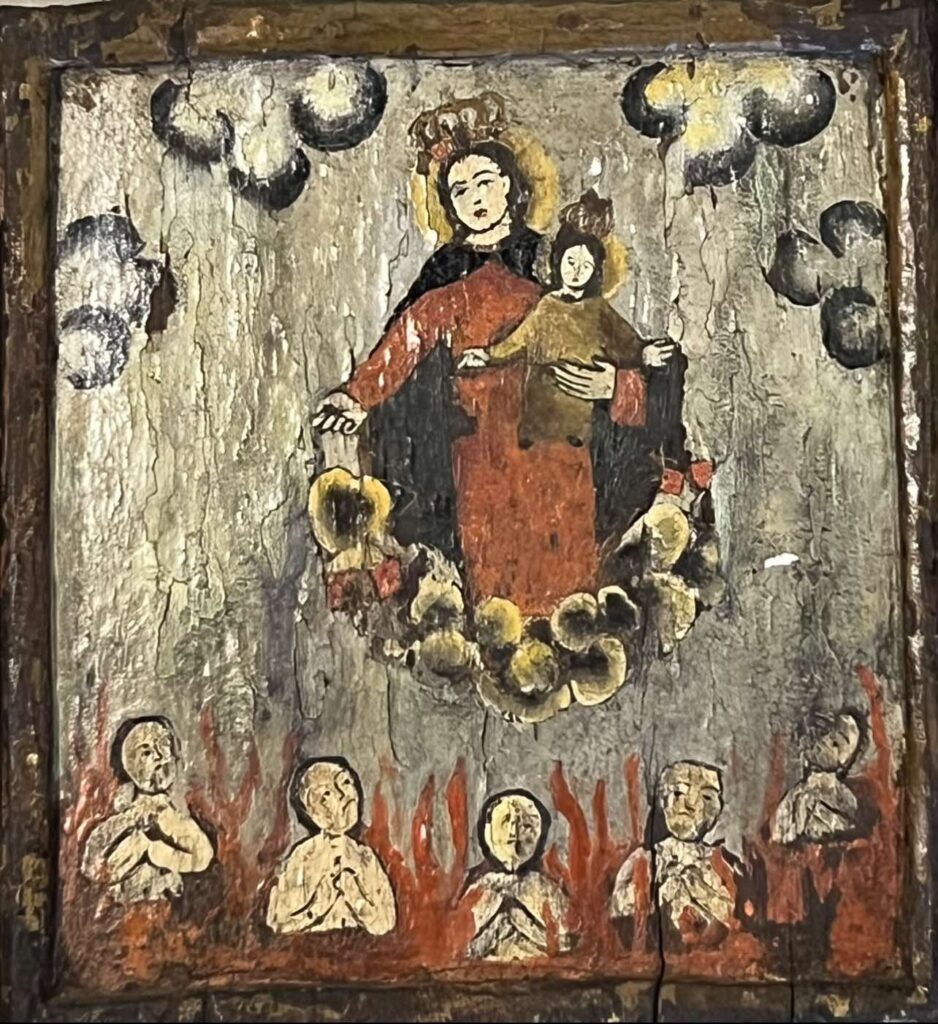
A folk painting on wood from Bohol depicting the Nuestra Señora del Carmen giving estampitas to those who want to be saved from the fires of hell.
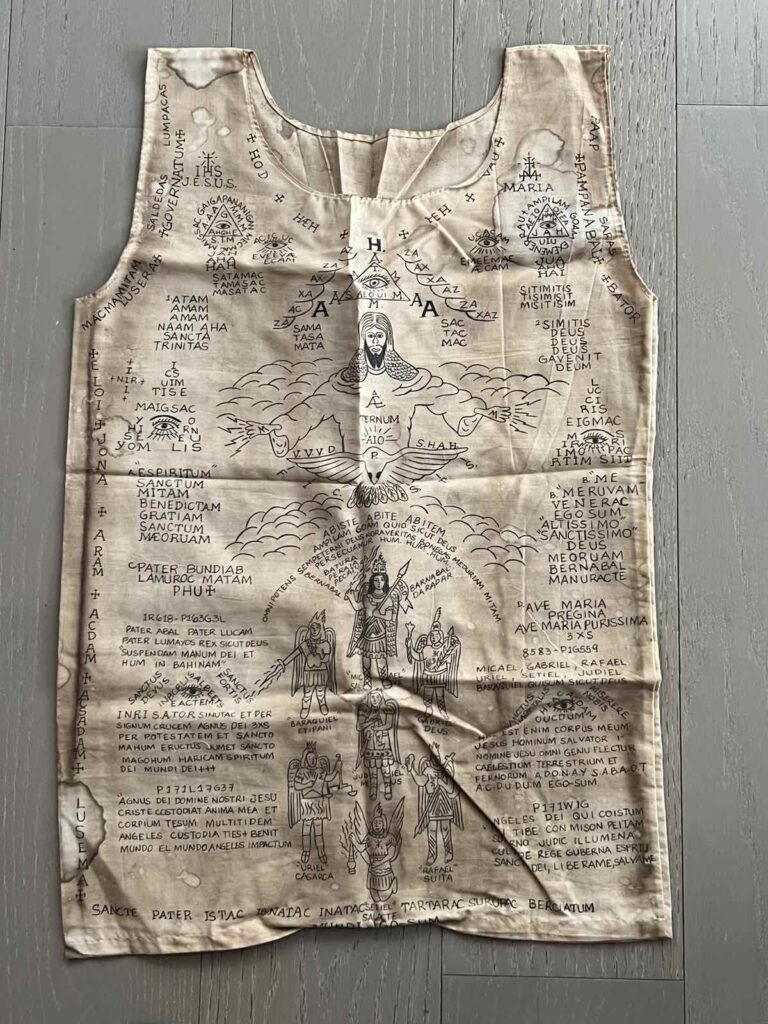
While the central image may seem like the Virgin Mary to some, it is actually the Infinita, the female created by the Infinito Dios, or the original God creator of the world, according to Pinoy anting-anting lore.


Alfajor necklace from Ilocos
Edwin’s passion for telling a story through his collection invariably caught the attention of Quintos, himself a master storyteller.
“He’s more concerned about the story than the object, which I think is a wonderful thing for a collector who tends to think of these material objects not just as signs of status and wealth, but also as sources of narratives. One thing I like about Edwin and the Bautista Collection is that it has range,” said Quintos.
He added: “What I really admire about them,” referring to Edwin and Aileen, “is [to them] it’s not so much the object and its price. Of course, we also talk about these things. But at the very basis of why they do this is a real love for culture. For the culture, we could say, [mostly] of the downtrodden and repressed.”

